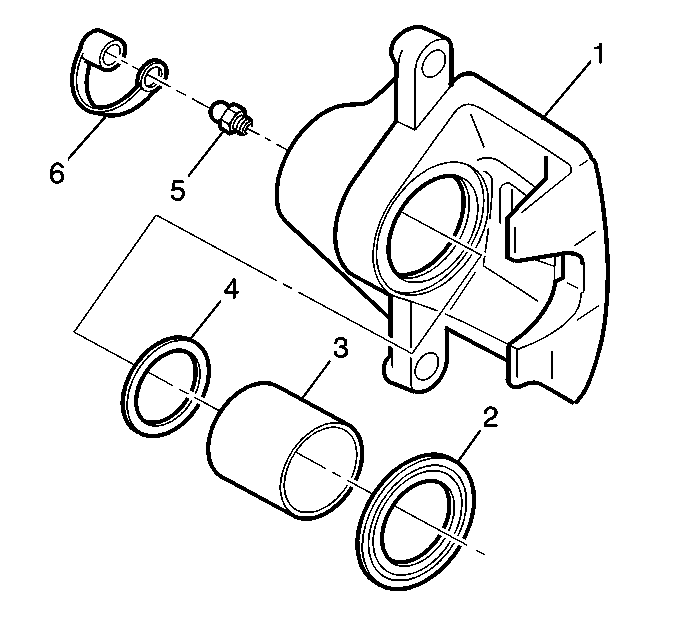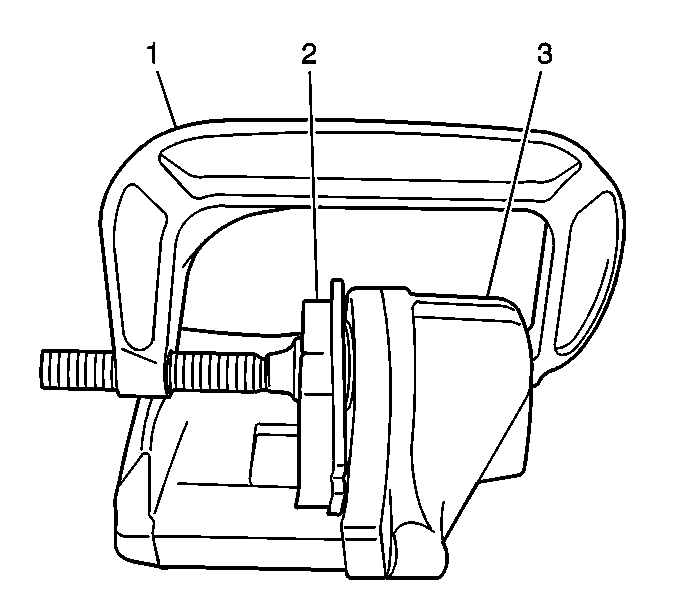Chevrolet Equinox Service Manual: Brake Caliper Inspection Disc Brakes Brake Calipers
Chevrolet Equinox Service Manual / Chassis / Brakes / Brake Caliper Inspection Disc Brakes Brake Calipers

Warning:Refer toBrake Dust Warning.
Inspect the brake caliper housing-(1) for cracks,excess wear, and/or damage. If any of these conditions are present,the brake caliper requires replacement.Inspect the caliper piston dust boot seal-(2) forcracks, tears, cuts, deterioration and/or improper seating in thecaliper body. If any of these conditions are present, the brakecaliper requires overhaul or replacement.Inspect for brake fluid leakage around the caliper pistondust boot seal-(2) and on the disc brake pads. If thereis any evidence of brake fluid leakage, the brake caliper requiresoverhaul or replacement.
Inspect for smooth and complete travel of the caliper pistonsinto the caliper bores:
The movement of the caliper pistons into the caliper boresshould be smooth and even. If the caliper piston is frozen ordifficult to bottom, the caliper requires overhaul orreplacement.
For single piston caliper applications, insert a discardedinner brake pad-(2) or block of wood in front of thepiston. Using a large C-clamp-(1) installed over thebody of the caliper-(3) and against the brake pad orblock of wood, slowly bottom the piston in the bore.For dual piston caliper applications, insert a discardedinner brake pad-(2) or block of wood in front of thepistons. Using 2-large C-clamps-(1) installedover the body of the caliper-(3) and against the brakepad or block of wood, slowly bottom the pistons evenly into thebores. Brake Rotor Thickness Measurement Disc Brakes Brake Rotors
Brake Rotor Thickness Measurement Disc Brakes Brake Rotors
Warning:Refer toBrake Dust Warning.If the inboard friction surface of the brake rotor is notaccessible, reposition and support the caliper with the brake pads.Refer toFront Disc Brake Pads Replacement ...
 Brake Pad Inspection Disc Brakes Brake Pads
Brake Pad Inspection Disc Brakes Brake Pads
Warning:Refer toBrake Dust Warning.Inspect the disc brake pads at regular intervals, or wheneverthe tire and wheel assemblies are removed from the vehicle.If replacement is necessary, always replace d ...
Other materials:
Passenger Compartment Air Filter Replacement
Passenger Compartment Air Filter ReplacementCalloutComponent NamePreliminary ProcedureRemove the instrument panel compartment. Refer toInstrument Panel Compartment Door Replacement.1Passenger Compartment Air FilterProcedureRelease the retainer and open the service lid. ...
© 2017-2025 Copyright www.cequinox.com

